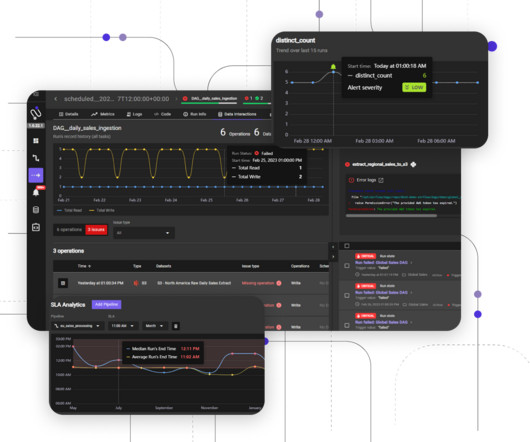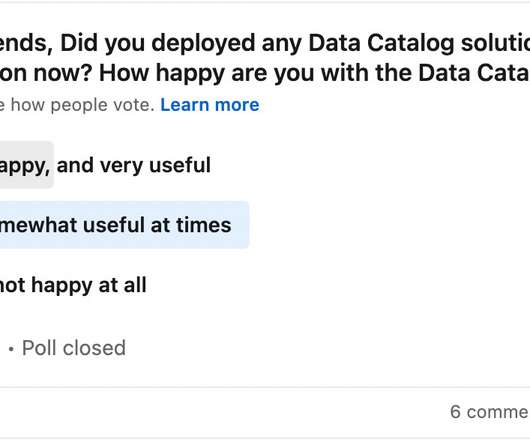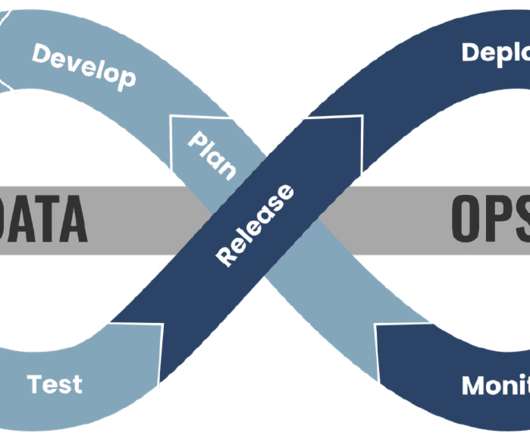DataOps Tools: Key Capabilities & 5 Tools You Must Know About
Databand.ai
AUGUST 30, 2023
DataOps , short for data operations, is an emerging discipline that focuses on improving the collaboration, integration, and automation of data processes across an organization. These tools help organizations implement DataOps practices by providing a unified platform for data teams to collaborate, share, and manage their data assets.













Let's personalize your content